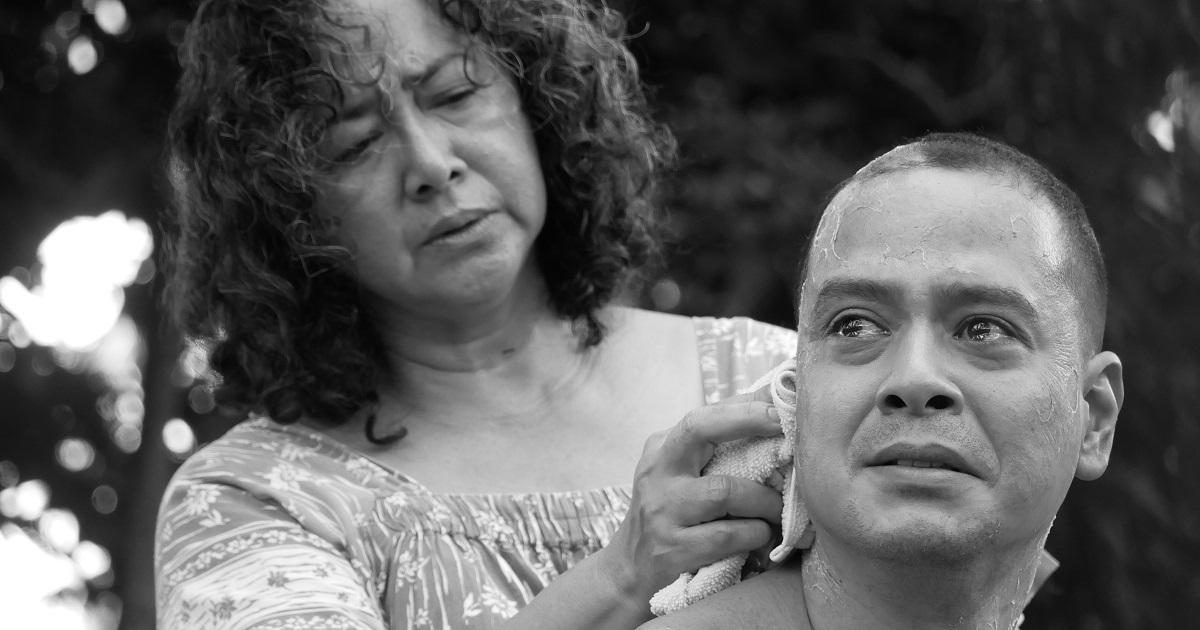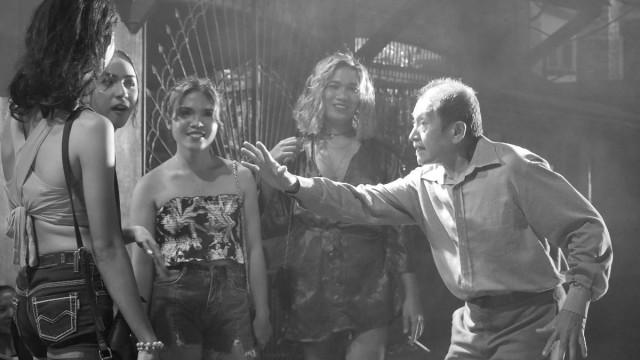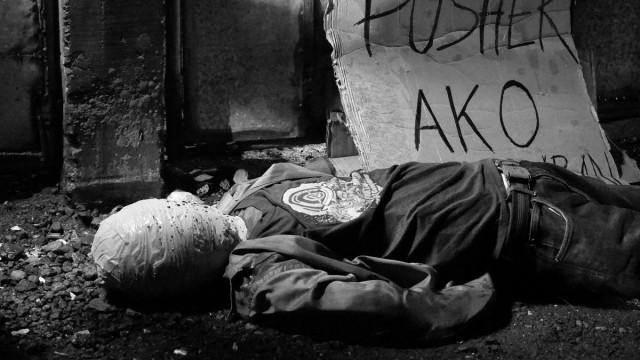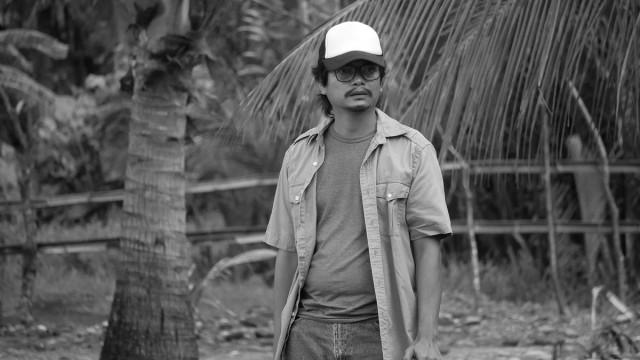Lav Diaz's 'Kapag Wala Nang Mga Alon' at the Venice Film Festival

VENICE, Italy — Prolific and award-winning filmmaker Lav Diaz is no stranger to international film festivals.
But, most especially, he has a special place in his heart for the Venice Film Festival because it was here where he won the Golden Lion award in 2016 for Best Film for the movie "Ang Babaeng Humayo." Aside from that, he also bagged the Best Director in 2020 for his movie "Lahi, Hayop ("Genus, Pan)" in the Orizzonti section of the festival, the Best Film in 2008 for "Melancholia" also in the Orrizzonti category, and the Special Mention award in Orizzonti in 2007 for the movie "Kagandahan sa banwaan ning mga engkanto."
This year, the 63-year-old auteur from Cotabato, will be back at the Lido with his latest film, "Kapag Wala Nang Mga Alon" ("When the Waves Are Gone") which will be featured in the Out of Competition / Fiction category.
Starring John Lloyd Cruz, Ronnie Lazaro, Shamaine Centenera Buencamino, and Dms Boongaling among others, the black-and-white 187-minute long movie is follows Lt. Hermes Papauran, one of the best investigators of the Philippines, who is in a deep moral crossroad. As a member of the police force, he is a first-hand witness of the murderous anti-drug campaign that his institution is implementing with dedication. The atrocities are corroding Hermes physically and spiritually, causing him a severe skin disease resulting from anxiety and guilt. As he tries to heal, a dark past haunts him and has eventually come back for a reckoning.

In his director's statement for the festival program, Diaz explained, "What happens when an agency task at protecting the citizenry and ensuring that the duly constituted laws of the land are adhered to becomes the enforcer of human rights violations (in the case of the Philippines, the police becoming the Grim Reaper himself)? The populist persona and demeanor of Philippine president Rodrigo Duterte catapulted him to such popularity unheard of in Philippine politics that everything he does, even unconstitutional and unconscionable acts like the extra-judicial killings done by the police, has semblance of entitlement, attributed mostly to the masses' imprimatur and approval. But his approval does not just come from the 'ignorant' masses but also from the intellectuals, the artists, the educated."
"The suffering of Lt. Hermes Papauran in the film is the suffering of the Filipino soul, the human soul. The very current shocking Ukraine invasion by Russia and the resultant brutality seems unheard of but it is just a magnification of the human malady that has been with us forever—how humanity has become so accepting to a form of psychosis in approving evil leadership, how humanity has become so helpless to a wall of petrified ignorance. Putin, Duterte, Assad, Trump... they've been with us forever, The Grim Reapers of the world."
Before we left for Venice, we were able to interview the prolific director-writer-editor about his latest obra maestra. Below are excerpts of our interview.
Congratulations on your film making it to the 79th Venice Film Festival. You are not a newbie in this festival. Why is this year's participation special for you and the film?
Salamat po (Thank you). Just to be back there at the Lido, I would feel really great, even without a film in their program. That's how special the place is. But of course, our latest film is premiering there again, in a very privileged section. The Mostra is one of the very, very few festivals then where my cinema was given a chance. The former head, the great Marco Muller and his programmers then were really brave and radical because they were defying all conventions. My first film there was 2007's nine-hour 'Kagadanan sa Banwaan ning mga Engkantos' ('Death in the Land of Encantos'), which received the Special Mention at the Orizzonti, and the following year, the eight-hour film 'Melancholia' took the Orizzonti Prize (Best Picture), and, of course, we got the Golden Lion in 2016 with the five-hour 'Ang Babaeng Humayo' ('The Woman Who Left'), and then, the Best Director for 'Lahi, hayup' (Genus pan) in 2020. 2011's 'Siglo ng Pagluluwal' ('Century of Birthing') premiered there as well. Now I will have to tell this story as a tribute to that group's heroism to cinema's cause. The programmer Paolo Bertolin who feverishly championed my works told me then that I should keep it a secret, that they were allowing my works to be screened using mini DVs, the cheap little tapes. They were doing it because I didn't have money for my works to be transferred into the very expensive standard mediums used for professional projections.

Your films have always been very outspoken against political corruption. Please tell us why your film, "When the Waves are Gone" is focusing on the anti-drug campaign.
Cinema has a responsibility to chronicle atrocious epochs, such as the six years of President Rodrigo where thousands died in his bloody war on drugs.
Please talk about the casting John Lloyd Cruz, Ronnie Lazaro, Shamaine Buencamino, Hazel Orencio—how and why you decided to cast them in their particular roles.
I've working with John Lloyd Cruz, Ronnie Lazaro and Hazel Orencio for a long, long time now. The key in our working relationship is trust and giving them their roles is founded on that. I've worked once with Shamaine Buencamino, when we were both actors in a film called 'Lorna.' I've seen some of her performances, in cinema and in theater. What really works for me is giving them freedom, which means that there will be an awareness on their part that they will have a bigger responsibility in embracing and delineating their characters. Oftentimes, I can only guide and instruct them. I hate imposing too much as I respect the idea that an actor's space is sacrosanct.

Please tell us how and why you cast non-actor Raffy Lerma, the photojournalist.
I invited Raffy Lerma to play himself in the film, inasmuch as the film was inspired by his photos and journals on Duterte's tokhang (the war on drugs popular local moniker) but he declined due to his shyness. The actor Don Melvin Boongaling, who really looks like Raffy, played the role. I wanted Raffy to talk, to be the real witness, because he was a real witness, his photos, especially the 'Pieta', were proofs of the extra-judicial killings that happened during the Duterte regime. He gave us his full support, he gave us his photos, and he talked about what he saw, and how the atrocities changed his views on life and existence. Today, he continues to be a tireless human rights advocate.
You shot this when COVID-19 hit. Talk about the challenges you encountered while filming.
We shot the film in 2020 and 2021 and health protocols during those years were really tough. It was a period of horror and great uncertainty. When Taal Volcano erupted in January 12, 2020, we immediately went there to start the shoot. We stopped shooting when general lockdowns all over the world were already imposed around the middle of March. By November, while strict health protocols were still being imposed, I went to Sorsogon alone to do location hunt. By the first week of January, I told the group to be ready. When we were about to start shooting, this was late February, three crew members got afflicted with the virus and we quarantined for fourteen days. We wrapped the Sorsogon shoot early second quarter of the year, and then around August we went to Lisbon for the European shoot. After I edited the film in my little hole in Marikina, we did the final grading in Lisbon and the sound engineering in Paris, all part of the grant ad co-production agreement. By the way, we shot the film on 16mm. That alone was very difficult; using an old cranky 16mm camera, and you won't be able to immediately see footages until the rolls have undergone laboratory chemical treatment. It's celluloid, we used black and white Kodak stocks. The laboratory is in Romania and we had to wait weeks and weeks before we saw what we shot. There was also the danger of the films being corrupted or getting lost in transit.
This is an international production. Please tell us more about who are the other countries and production companies involved and how they got involved.
Arte France and Rosa Films of Lisbon, and Epicmedia here in the Philippines are the major co-producers of the film. Olivier Pere of Arte, Joaquim Sapinho of Rosa and Bianca Balbuena of Epicmedia are supporters and believers of my works. And I trust them. Those are the simple reasons why we're working together.
You mentioned in an interview that you were two months alone in Sorsogon in the wilderness "hunting for your soul." Can you please tell us more about that experience?
I was there for two months, alone, walking everyday, taking notes, maintaining a vegan diet, struggling to find a story, looking at desolate spaces, marveling on majestic places, talking to myself and with simple people, discoursing with so many multos of the past and of the present and of nowhere, and embracing mortality. The hardest part is interminably being confronted by misery, they were just everywhere, even under my bed, but I also found poetry, discovered primal realms and transcendent nuances that made my faith in humanity stronger. I told this soul-sustaining story to a journalist friend and he posted it in one of his articles.
One day, after walking for long hours under the punishing humidity, I stopped by a decrepit waiting shed in a desolate rough road. I actually fell asleep and had a dream that I couldn't remember. I woke up with the noise of a tricycle stopping by. A woman and three kids (two girls and a boy) alighted and settled near me. They were in their best clothes, especially the children; their burnt skins show that they were poor. The children started playing while the woman watched over them, often reminding them not to go to the nearby creek as it is full of snakes and leeches. Some twenty minutes later, another tricycle arrived, and a woman alighted with a Jollibee bag. The children happily started shouting, Nandyan na si Auntie! They gathered in a corner, placing all the Jollibee goods in the long bamboo chair, then started singing Happy Birthday. It was the birthday of the youngest girl. They celebrated her birthday there, in that most forlorn waiting shed. They were so, so poor but they were so, so happy. I couldn't contain myself from the sight; I was crying hard. That day, my faith in humanity survived.
What do you hope audiences will get after watching this movie?
Truth.
—MGP, GMA News




